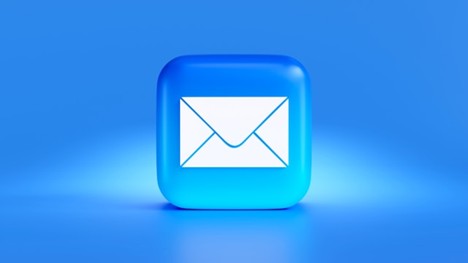
Businesses are constantly looking for ways to connect with customers, build loyalty, and drive sales. While many companies focus primarily on digital platforms, one timeless method that continues to deliver results are direct mail campaigns and other physical marketing strategies. When executed effectively, these traditional approaches can be powerful tools for driving online sales, particularly in the retail and e-commerce industries.
This article delves into how businesses can harness the potential of physical marketing to enhance online sales. We’ll explore its role in the customer journey, strategies for integrating it with digital efforts, and the unique benefits it provides in a world saturated with digital content.
Physical marketing materials include postcards, catalogs, brochures, and letters, sent through postal services to targeted audiences. While email, social media, and digital ads dominate the marketing landscape, physical marketing remains a highly effective medium for engaging with consumers. According to the U.S. Postal Service, 98% of people check their physical mailbox every day, and 77% of customers sort through the mail immediately, a statistic that highlights its relevance.
In the world of e-commerce, where online sales reign supreme, physical marketing might seem like an outdated strategy. However, physical marketing can bridge the gap between offline and online interactions, helping businesses increase brand awareness, drive website traffic, and ultimately, convert leads into sales.
One of the most powerful advantages of physical marketing is its ability to target specific customers. In an age where personalization is crucial, businesses can use data analytics to segment their customer base and send tailored marketing pieces. For example, e-commerce businesses can use customer purchase history, demographic data, or even abandoned cart data to send personalized postcards or discount offers that are relevant to individual consumers.
By incorporating personalized offers into physical marketing campaigns - such as discounts, free shipping codes, or exclusive deals - businesses can create a strong call to action that encourages recipients to visit their online store. These tangible incentives give customers a reason to engage, making them more likely to act on the offer and make a purchase.
The digital landscape is saturated with online ads, pop-ups, and email promotions, often leading to ad fatigue and skepticism. In contrast, physical marketing offers a refreshing change of pace. A well-designed marketing piece, particularly one that provides a thoughtful or high-quality experience, can help build trust with potential customers.
By receiving a physical, branded piece of communication, consumers are more likely to remember the business, which in turn can increase brand recognition. Physical marketing provides a more personal touch compared to an impersonal online ad, creating a memorable connection with the recipient. Furthermore, physical communication often gives a sense of legitimacy and reliability, something particularly important for e-commerce businesses that are trying to gain the trust of new or hesitant customers.
Physical marketing doesn’t have to exist in isolation. Marketers can seamlessly integrate physical communication with online channels to create a cohesive customer journey. One effective strategy is to incorporate QR codes or custom URLs into marketing pieces. A QR code, which can be scanned using a smartphone, directs recipients to a landing page or product page on a retailer’s website.
By offering an easy way for customers to transition from the offline to the online world, businesses can create an efficient and seamless path for purchasing. Additionally, using a custom URL or vanity link ensures that businesses can track the response rate from physical marketing campaigns, providing valuable insights into consumer behavior.

E-commerce businesses that focus on customer retention can also benefit from using physical marketing to enhance loyalty. Loyalty programs or exclusive offers, such as birthday discounts or member-only sales, can be delivered through physical mail, encouraging repeat purchases and long-term engagement with the brand.
For instance, a retail brand may send a personalized thank-you card after a customer's first purchase, including a coupon code for their next order. This gesture not only acknowledges the customer’s purchase but also incentivizes future online transactions. Moreover, when customers feel valued, they are more likely to become repeat buyers and brand advocates, further driving online sales.
Physical marketing can also be an effective tool for promoting seasonal campaigns, flash sales, or limited-time offers. By using physical marketing to notify customers of upcoming sales or product launches, retailers can build anticipation and excitement, compelling customers to visit their online store to take advantage of the offer.
A clothing retailer could send out a holiday catalog with time-sensitive discounts, creating urgency and encouraging immediate online purchases. Alternatively, a flash sale could be promoted through physical marketing, with a discount code or limited-time offer encouraging customers to act quickly.
To maximize the potential of physical marketing, businesses should adopt a multi-channel marketing approach, integrating physical communication with other digital efforts. The following strategies can help retailers effectively combine physical marketing with their online sales initiatives:
One effective integration is combining physical marketing with email marketing campaigns. After sending out mail pieces with special offers or coupons, businesses can follow up with targeted email campaigns. The emails can remind recipients about the offer, highlight the ease of online shopping, and include additional personalized recommendations based on their previous interactions with the brand.
This two-pronged approach ensures that customers have multiple touchpoints with the business, increasing the likelihood of engagement and conversion.
Physical marketing can be a powerful tool for retargeting and remarketing campaigns. After a customer visits your website but leaves without making a purchase (perhaps after browsing for an extended period), you can follow up with a physical marketing piece that includes a reminder of the items they viewed or an incentive to complete their purchase.
Such targeted follow-ups create an ongoing connection with the customer, reminding them of their interest and encouraging them to finalize their online transaction. This strategy has been proven to increase conversion rates, particularly when paired with personalized offers or discounts.
Just like with digital marketing, physical marketing campaigns can benefit from A/B testing to determine which messages, offers, or designs resonate most with recipients. Businesses can test different types of physical pieces—such as postcards versus catalogs, or different discount structures—and measure how each impacts online sales.
Through data analysis, businesses can fine-tune their physical marketing strategies, ensuring that their efforts are always optimized for the highest possible return on investment.
While many businesses are keen to focus on digital marketing, physical marketing has several distinct advantages:
Tangible and Physical: A physical marketing piece is something a consumer can physically hold, increasing its memorability and perceived value.
Less Competition: In a crowded digital space, physical communication has less competition. Physical marketing pieces don’t get lost in a sea of emails or online ads.
Improved Response Rates: Studies show that response rates for physical marketing campaigns can be higher than digital campaigns, with a notable increase in engagement when offers are personalized.
Flexibility: Physical marketing can be adapted to fit any marketing campaign, whether it's a seasonal promotion, a loyalty-building initiative, or a product launch.
While digital marketing continues to evolve, physical marketing remains a powerful tool in the marketer’s arsenal. When used strategically, it can be an invaluable driver of online sales for retail and e-commerce businesses. By creating targeted, personalized campaigns that seamlessly integrate with digital efforts, businesses can engage customers in a way that stands out from the noise of digital advertising, build brand trust, and ultimately drive more sales online.
As the landscape of marketing continues to shift, businesses that effectively combine the strengths of both online and offline strategies will have a competitive edge in driving online sales and securing long-term customer loyalty.